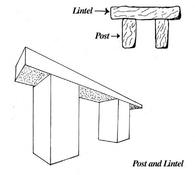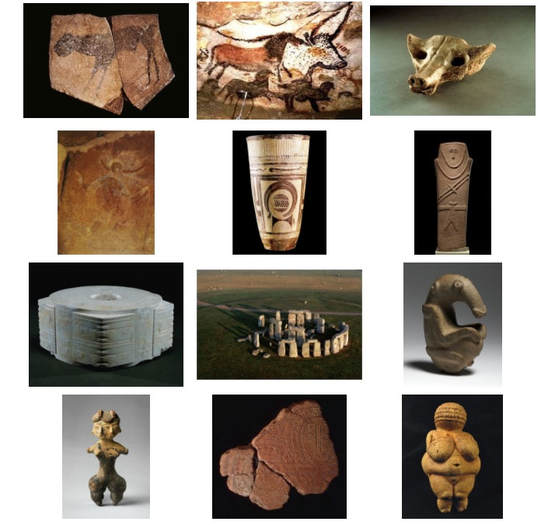GLOBAL Prehistory
Material from Valerie M. Park, gratefully used with permission.
NEED TO KNOW DATES
PALEOLITHIC: 25,000 BCE
NEOLITHIC: 5,000 BCE
Paleolithic Art: 40,000-8,000 BCE in the Near East
"Old Stone Age" 40,000-4,000 BCE in Europe
(Woman of Willendorf, Feline-headed statue, Lascaux Caves, Catal Hoyuk)
Neolithic Art: 8,000- 3,000 BCE in the Near East
"New Stone Age" 4,000- 2,000 BCE in Europe
(Stonehenge)
KEY IDEAS
CHARACTERISTICS OF PAINTINGS
PALEOLITHIC: 25,000 BCE
NEOLITHIC: 5,000 BCE
Paleolithic Art: 40,000-8,000 BCE in the Near East
"Old Stone Age" 40,000-4,000 BCE in Europe
(Woman of Willendorf, Feline-headed statue, Lascaux Caves, Catal Hoyuk)
- Hunter-Gatherers, Nomadic
Neolithic Art: 8,000- 3,000 BCE in the Near East
"New Stone Age" 4,000- 2,000 BCE in Europe
(Stonehenge)
- Cultivated, raised livestock, organized settlements
KEY IDEAS
- 75,000 BCE: Stick of ochre (a pigment of the earth, brown/yellow) are engraved in Blombos Cave, South Africa, 61,000 years before the Lascaux caves!
- Earliest works are cave paintings and portable sculptures
- Conjectures are made about the meaning of prehistoric works
- No one single function and the purpose can only be guessed
- Monuments like Stonehenge show that people were able to build structures made of the post and lintel system.
- The need to create is one of the strongest human impulses.
- Focus on materials indigenous to the environment/geography
- Since context is largely unknown, focus on original location and content
CHARACTERISTICS OF PAINTINGS
- Animal figures dominate- usually with a dark outline
- Humans represented as stick figures, negative handprints
- Lascaux Caves, 15,000- 13,000 BCE, France
- Altimira Caves, Spain
- Shelters out of large animal bones
- Post and lintel systems (most basic type of architecture)
- Stonehenge, possibly
- All in-the-round sculpture is portable
- Some human representations have emphasis on certain body parts
- Carvings on cave walls utilize natural formations in the rock
|
Content Area 1: Global Prehistory 30,000–500 B.C.E. (11 WORKS)
|
VOCABULARY
1. PALEOLITHIC 2. NEOLITHIC 3. SCHEMATIC 4. SHAMAN 5. ABSTRACTION 6. HUNTER-GATHERER 7. RITUAL 8. COSMOS 9. CERAMICS 10. MONOLITHIC 13. ANTHROPOMORPHIC 14. MOTIFS 15. PROFILE 16. SILHOUETTE 17. CONTOUR LINES 18. BAS RELIEF 19. GEOMETRIC 20. STYLIZED 21. STELE 22. SONG 23. INCISE 24. SUBTRACTIVE 25. MEGALITH 26. TRILITHON 27. POST AND LINTEL |


